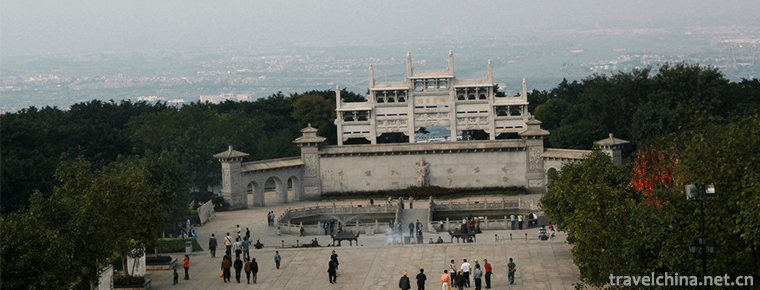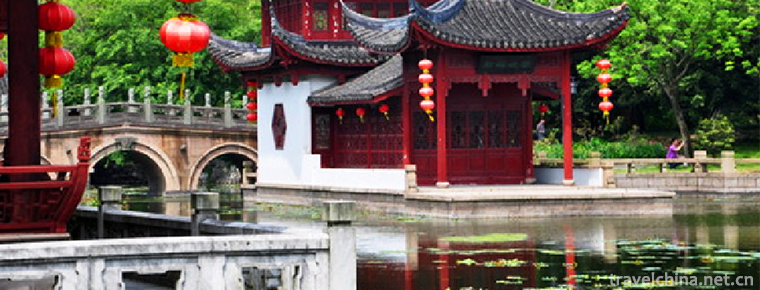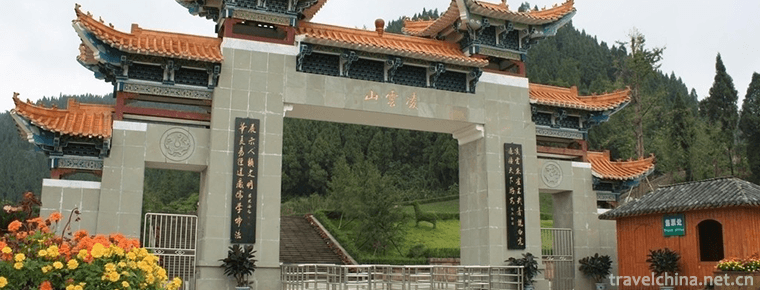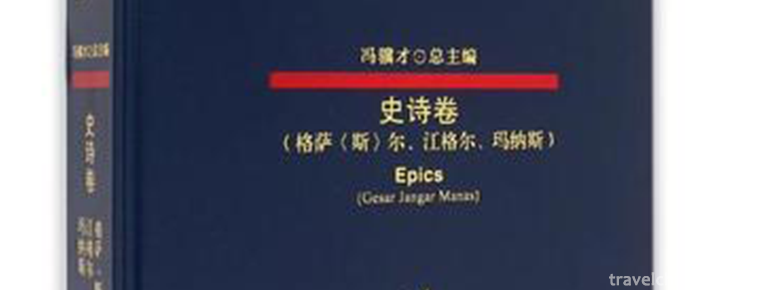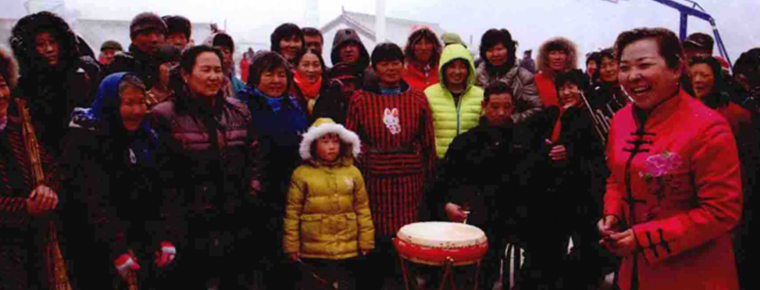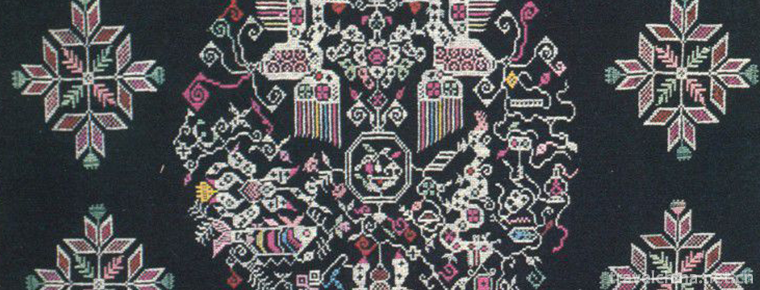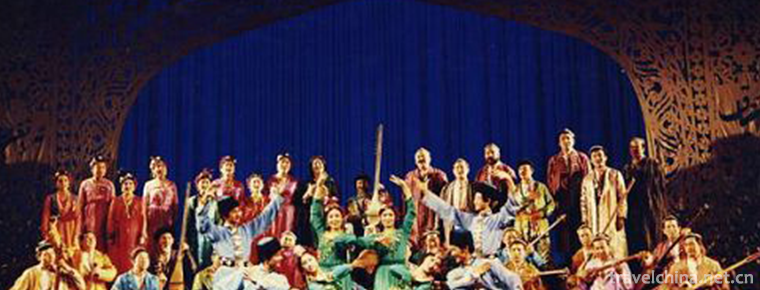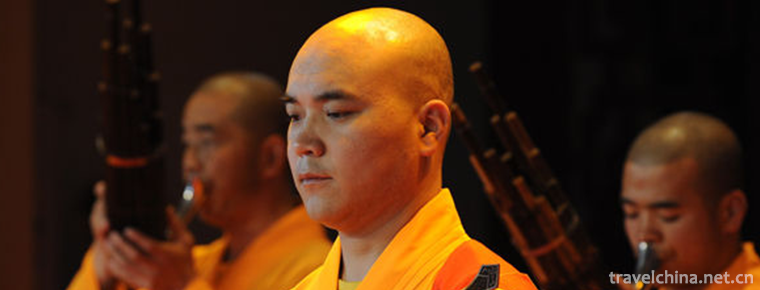Naxi Dongba Painting
Naxi Dongba Painting
Dongba Painting of Naxi Nationality, a traditional folk art in Lijiang, Yunnan Province, is one of the national intangible cultural heritages.
Naxi Dongba painting is an important part of Naxi Dongba culture and art, which is spread in the ancient city area of Lijiang City and Yulong Naxi Autonomous County of Yunnan Province. During the ritual of religious activities, the Naxi Dongba painted various images of Buddhas, gods, figures, animals, plants and demons, and worshipped and sacrificed them. All kinds of paintings serving religious activities are collectively called Dongba paintings. The Naxi Dongba paintings show the harmonious relationship between man and nature, mainly in the form of scroll paintings, wooden cards, card paintings and scroll paintings.
On May 20, 2006, the Naxi Dongba paintings were approved by the State Council of the People's Republic of China to be included in the first batch of national intangible cultural heritage lists with the heritage number_-13.
historical origin
As for the origin of Dongba painting, scholars generally believe that it originated from the original painting of witchcraft sacrifice of Naxi ancestors. On the one hand, this original painting developed into Naxi hieroglyphics, on the other hand, it developed into Dongba painting art.
Since the Sui and Tang Dynasties, the primitive religious beliefs of the Naxi Nationality have been influenced by Ben religion, Tibetan Buddhism and Taoism of the Han Nationality, and gradually formed Dongba religion. Therefore, Dongba painting art has gradually matured with the development of Dongba religion, and it has been perfected and inherited by Dongba priests in past dynasties.
Cultural characteristics
Classification of Paintings
According to different art forms, Naxi Dongba paintings can be divided into woodcut, classical painting, card painting, scroll painting and road map.
Wood printmaking: It is divided into flat-headed and pointed paintings, mainly according to the shape of the board. This inspiration probably comes from the ancient Qiang people's "face-shaped wooden cards" and the Naxi people's "land insertion sacrifice" tradition has been developed and perfected. Flat head is used to draw gods and Buddhas, and sharp head is used to draw ghosts.
Classic painting: decorative paintings on the cover of classical books, page paintings on the title of classical books, inscriptions and drawings of "winter model" etc.
Solitaire Painting: Painting five gods of war (east, south, west, north and middle), Shenpeng Xiuqu Dou evil organ, golden giant frog, peacock, each god of Youma, five crowns and all kinds of paintings for divination and divination. Cardboard painting is based on homemade clay paper. It mainly includes two types: one is the painted gods, or worshipped on the altar, or worn on the head of the priest; the other is the painting codes, or used as the norms of the painters, or as the textbooks of painting inheritance. There are many kinds of these codes, which can be self-contained.
Scroll painting: On the basis of inheriting Naxi traditional painting, scroll painting draws lessons from Tibetan and Han painting techniques, and absorbs Buddhist and Taoist cultural elements, especially the characteristics of Tibetan Tangka statue art since Yuan and Ming dynasties, and forms a new painting form.
Divine Road Map: Large vertical continuous scroll for funerals and rituals beyond the dead. The whole picture depicts the specific scenes of hell, earth, nature, heaven and other stages through which the deceased souls go through. It shows the process of the reincarnation of heaven, earth, hell and life and death. He uses comic pictures to reflect the immortal life consciousness of the souls of the Naxi ancestors and to improve the ethical concept of life.
Artistic Characteristics
Line characteristics
In the overall form of expression of Naxi Dongba paintings, lines are undoubtedly one of the main means of expressing Dongba religion's worship of various scenes such as nature, ghosts, animals, heaven, earth and hell. In Dongba painting, the integrators of witchcraft, medicine, learning, art and craftsmen are not only scholars but also dancers, singers, calligraphers and sculptors. They are full of imagination, expression and creativity in the language of painting lines. They are faithful in outlining lines, such as bending wire, fluent and bold brushwork, and even reach the realm of magic.
- Modeling features
Because Dongba Confucianists have lived in the folk for a long time and worked in agriculture or animal husbandry, they are very familiar with the dynamic expressions, clothes and clothing, life customs and animals and plants of the people around them, as well as with hieroglyphs and pens for a long time, so they are good at expanding their features to show their personality. Their shapes are concise and generalized, and their brushwork is fluent and bold with exaggerated techniques. Put, the shape is clumsy and lifelike, with a simple and natural style. It is not difficult to see that the Naxi people have mastered high plastic ability and skilled artistic skills very early, showing the wisdom and ability of plastic arts in many aspects.
In the process of observing nature and painting, Naxi painters have formed a full understanding of the objects of painting. Whether in Shenlu or in wooden and cardboard paintings, the illustration albums and pages show the characteristics of simplicity, simplicity, trustworthiness, capturing and vivid.
In the way of expression, the Naxi Dongba painting is mainly single-line flat painting, exaggerated shape, deformation, generalization, focusing on dynamic vivid, rough and concise brush. For example, the expressive techniques and characteristics of "Shenlu Tu" are firstly embodied in the shape of ghosts and gods. Many ghosts and beasts with grinning teeth and grinning mouths have strange and vivid shapes, which punish the dead who fall into hell in various ways. The author uses extremely concise brushwork, exaggerated modelling means and hand-to-hand sketches to show the unique artistic form of childlike elegance, vivid form, and directly shows the cruel circumstances of the wicked being punished in hell in the form of painting, which makes people startled and shocked by sight, with lingering palpitations, and has extraordinary expressive ability. The sculpting method of scroll painting directly inherits the aesthetic tradition of Naxi hieroglyphics and wooden cards. The shape is strange and frank, with the smell of soil and full of wild interest; it has greater randomness, and many animal images bring a sense of liveliness to the picture.
The creation of animal images in Shen-Axis Paintings is in line with the pictographs, with strong generality of lines, rich changes in manners and strong sense of motion. It reflects the rational and orderly composition and forms a rich and changeable aesthetic psychological rhythm.
Colour characteristics
During the long-term practice of painting, the Naxi Dongba priests were able to draw materials locally, extract painting pigments from minerals and plants, make scriptures, paper for painting, bamboo brushes and brushes, and apply them to paintings.
Dongba paintings of Naxi nationality have bright colors, which are no longer limited by natural colors. However, they mostly use primary colors to contrast strong colors, and less use intermediate colors and duplicate colors. They have the characteristics of folk paintings. In the later period, the techniques of Han and Tibetan painting were absorbed and gradually matured. For example, in the use of the color of "Shenlu Tu", the brighter colors such as red, yellow, green and white are mostly used to express the color of the heaven. They are strong in contrast, bright in color and full of strong sense of decorative beauty. They show a magnificent paradise and express people's yearning for a better life. In the scene of hell, dark colors are used, such as black, blue, cyan and dark green. They mainly depict black mice, sparrows, 36 black mountains, 30 black rivers, dark poisonous sea, nigger, black bone god, etc. in the underground world. The whole color is gray and black, showing a gloomy, horrible and imaginary hell. From the aspect of color expression, the relationship between brightness and shade, cold and warmth of the picture color is very strong. It pays attention to the balance of cloth color, the density of color blocks and the interpenetration of various colors, which enhances the integrity and stability of the picture.
Production process
Dongba paintings of Naxi nationality mainly use wood chips, Dongba paper, linen and other materials, dip self-made bamboo pens in pine smoke ink to sketch the wheel gallery, then apply various natural colors such as red, blue, black, etc., and finally produce a complete Dongba painting.
Inheritance and protection
Inheritance value
The image of Naxi Dongba painting has a strong primitive meaning. It is mainly expressed by lines, and does not pay attention to the external proportion of things. But it is simple and vivid, strange and bizarre, full of wild interest, colors are mostly used in the original color, bright and eye-catching. Many pictures are also written and painted, retaining strong hieroglyphic writing characteristics, and are "living fossils" for the study of human primitive painting art.
The representative of Naxi Dongba painting, Shenlu Tu, is composed of more than one hundred block comic strips. It depicts more than 360 characters and animal images in a straight and long volume. The pictures are vivid and gorgeous, the figures are vivid and vivid, the scenes are magnificent and the momentum is magnificent. It is influenced by Tibetan painting art and has the traditional style of Naxi nationality. Ge and characteristics are the treasures of Dongba painting art, known as the first painting volume of primitive religion, which has high cultural and artistic research value.
Inheriting characters
He Xun, male, Naxi nationality, born in 1926, died in 2009, Lijiang, Yunnan Province. The first batch of national intangible cultural heritage projects are representative inheritors of Naxi Dongba paintings.
He Shixian, male, the fifth group of representative inheritors of national intangible cultural heritage projects, declared by Lijiang City, Yunnan Province, represents the Naxi Dongba painting project.
protective measures
Legal protection
In June 2001, the Standing Committee of the Yunnan Provincial People's Congress approved the Regulations on the Protection of Dongba Culture in Lijiang Naxi Autonomous County of Yunnan Province, which were amended in December 2005 and renamed the Regulations on the Protection of Dongba Culture of the Naxi Nationality in Yunnan Province. Article 3 of the new Regulations is that the Naxi culture protected by the Regulations includes... Naxi Dongba language, music, dance, folk art, painting, sculpture, clothing, utensils, representative buildings and facilities and places, so far the inheritance of Dongba culture has a clear legal guarantee.
Implementation of the education system
1. Insist on school education and improve teaching mode;
2. Re-orientating the Naxi Dongba paintings;
3. Combine the teaching of artistic techniques with the teaching of moral concepts.
social influence
Important activities
From December 10 to 11, 2016, the 11th Confucius Institute Congress was held in Kunming, Yunnan Province intangible cultural heritage exhibition of "recalling beautiful Yunnan" was presented at the 11th Confucius Institute Congress, and the national representative inheritors of Naxi Dongba Painting exhibited live on the spot.
On the morning of March 2, 2018, Kunming Exhibition of the National Art Foundation Project "Hundred Years Exhibition of Naxi Dongba Painting Art" opened in Yunnan Provincial Library, and 100 sets of Naxi Dongba Painting Works were displayed on the spot.
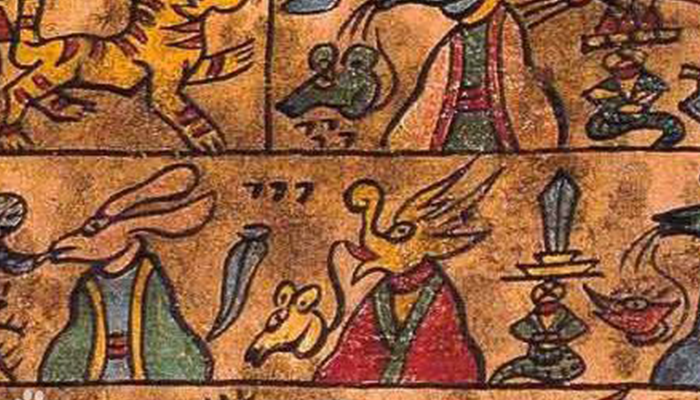
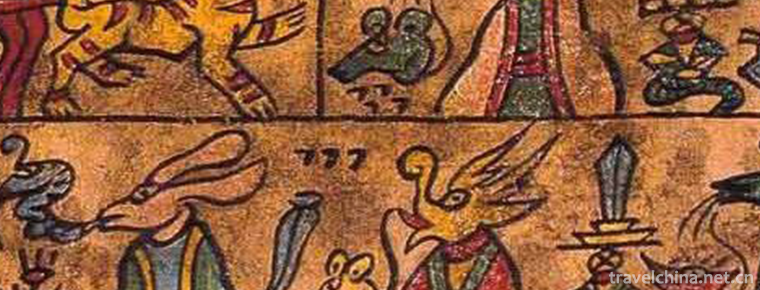
Naxi Dongba Painting
-
Xiqiao Mountain Scenic Area
Xiqiao Mountain Scenic Spot is located in the southwest of Nanhai District, Foshan City, Guangdong Province, China. It has 72 peaks, forming numerous waterscapes, 232 springs and 28 waterfalls.
Views: 203 Time 2018-12-12 -
The Grand View Garden Area of Shanghai
Shanghai Grand View Garden is located at 701 Qingshang Highway, Qingpu District, Shanghai. It is situated on the west side of Dianshan Lake, 65 kilometers away from downtown Shanghai.
Views: 182 Time 2018-12-19 -
Baligou Scenic Area
Baligou Scenic Area is located in the deep mountain area of Shangbali Town, Huixian County, Xinxiang City, Henan Province, 50 kilometers northwest of Xinxiang City, the southern foot of Taihang Mounta
Views: 223 Time 2018-12-24 -
Lingyun Mountain Scenic Area
Lingyun Mountain Scenic Spot is located in Gaoping District of Nanchong City, with an area of 20 square kilometers and a total investment of 300 million yuan. The scenic spot is dominated by Lingyun M
Views: 207 Time 2018-12-26 -
Gesar
Gesar (Sr) came into being in the second half of the 17th century and spread among the Mongolian people in Mongolia, Liaoning, Jilin, Heilongjiang, Qinghai, Gansu, Xinjiang and other provinces and reg
Views: 338 Time 2019-05-01 -
Jingdong drum
Jingdong Drum is a traditional rap art originating in Sanhe, Xianghe, Pinggu and Baodi of Hebei Province. The main instruments, in addition to the singer's left hand with copper plate,
Views: 118 Time 2019-05-07 -
Cross stitch
Flower picking, a kind of drawing work, also refers to a needle method of embroidery, Chinese folk traditional handicraft. Also known as "pick weave", "cross embroidery", "cro
Views: 238 Time 2019-06-21 -
Uygur Daolang Maxi Refu
Maigaiti County is located in the southwest of Xinjiang Uygur Autonomous Region. It is a typical Uygur inhabited area. About 89% of the population is Daolang Uygur who can sing and dance well. Among t
Views: 157 Time 2019-06-26 -
Wutaishan Buddhist Music
Wutai Mountain Buddhist music refers to the traditional Buddhist music that has been circulating for a long time in the temples of Wutai Mountain, the top four famous mountains of Chinese Buddhism. Wu
Views: 134 Time 2019-06-29 -
China University of Labor Relations
China Institute of Industrial Relations (China University of Labor Relations) All China Federation of trade unions Ordinary Institutions of higher learning It is jointly built by the all China Federat
Views: 170 Time 2019-12-20 -
Huahu Lake
Huahu is located on the 213 national road between Ruoergai in Sichuan Province and Langmu temple in Gansu Province. It is a natural Haizi on the grassland of GER dam. Geer dam is the second largest grassland in China after Hulunbeir Grassland
Views: 163 Time 2020-11-07 -
cheongsam in the Republic of China
Since 1840, the western culture has been infiltrated into the local culture of the Qing Dynasty. Many coastal cities, especially Shanghai, have taken the lead in western culture because of the mixture of Chinese and foreign cultures, and their clothing has begun to undergo potential changes.
Views: 130 Time 2020-12-11
